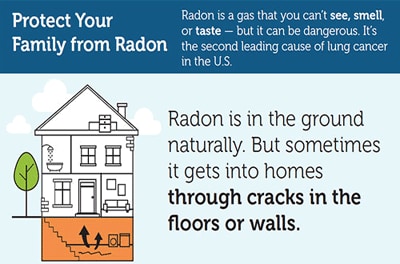What is radon gas? Is it harmful?
Is radon really bad for you?
Breathing radon over time increases your risk of lung cancer. Radon is the second leading cause of lung cancer in the United States. Nationally, the EPA estimates that about 21,000 people die each year from radon-related lung cancer. Only smoking causes more lung cancer deaths.
The event dramatized the truth that radon levels specifically homes can periodically be orders of size higher than typical. Radon soon ended up being a typical property owner issue, though normal residential direct exposures are a couple of orders of magnitude lower (100 Bq/m3, or 2.5 pCi/L), making private testing important to analysis of radon risk in any kind of specific house. Radon does not trigger itchy eyes or watering noses, yet it does harm your lungs with time. Long-term exposure over the course of years, even if radon levels climb and also drop in time, dramatically boosts your opportunities of establishing lung cancer. Because you're spending hours at once in your home breathing in the air, you're mosting likely to take in plenty of radon as you prepare, shower, and sleep if it's present in the residence's air supply.
As uranium hidden in globs of dirt and pebbles damage down with time, radon gas is released as part of the contaminated decay. Once it's free from the soil, it has several courses to enter the ordinary residence through cracks in the foundations, spaces in first floor as well as basement wall surfaces, seams around windows, and various other comparable openings.
Is radon mitigation really necessary?
When radon gas enters the body, it exposes the lungs to small amounts of radiation. In small quantities, experts say this is harmless. However, in persistent exposures or larger quantities, radon can damage the cells of the lining of the lungs, increasing a person's chance of developing lung cancer.
At the time of our documentation (January 2011), Maryland was the only state without any sort of radon control program. Furthermore, 3 various other states had programs that consisted only of online details about radon or maps of radon degrees in the state.
- Radon gas is a naturally-occurring byproduct of the radioactive decay of Uranium in the soil.
- Depending upon your geographic place, the radon degrees of the air you breathe outside of your house may be as high as 0.75 pCi/L.
- The United States EPA has actually placed it plainly, specifying, "Any kind of radon exposure has some risk of triggering lung cancer cells.
In the United States, around 14 states have a state radon programs which train and also license radon reduction specialists and also radon https://sordus35v2.doodlekit.com/blog/entry/10230158/radon-poisoning dimension professionals. To figure out if your state licenses radon experts contact your state wellness department. Without the proper equipment or technical understanding, radon degrees can actually boost or develop various other extra prices and possible hazards. A listing of qualified reduction company is offered with state radon workplaces, which are listed on the EPA web site at/ radon/whereyoulive. html.

The research study paid very close attention to the cohort's levels of smoking cigarettes, job-related exposure to health hazards as well as education achievement. Nonetheless, unlike the majority of the residential radon researches, the research was not population-based.
How long does it take for radon to cause cancer?

Fact: You will reduce your risk of lung cancer when you reduce radon levels, even if you've lived with an elevated radon level for a long time. Keep in mind that radon levels below Have a peek at this website 4 pCi/L still pose some risk and that radon levels can be reduced to 2 pCi/L or below in most homes.